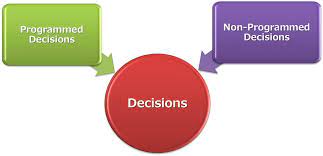What are the most commonly asked questions about making effective decisions?
- What are the key elements of an effective decision making process?
- How can I ensure that I make the best decisions possible?
- What techniques can be used to help me make better decisions?
- How do I weigh different options when making a decision?
- What strategies can I use to avoid common decision-making mistakes?
- How can I stay informed on current trends and developments related to my decision-making process?
- How do I know if a particular decision is the right one for me and my organization?
What are the key elements of an effective decision making process?
- Define the problem: Clearly define the problem and identify the decision to be made.
- Gather information: Collect relevant information and data to support the decision making process.
- Identify options: Brainstorm possible solutions and identify the pros and cons of each option.
- Evaluate options: Analyze the available data to evaluate each option objectively and determine which one is best suited to achieve the desired outcome.
- Make a decision: Choose a course of action based on the evaluation of options, ensuring that it is in line with organizational goals, values, and objectives.
- Implement & Monitor: Take steps to implement the chosen solution and monitor results over time to ensure that it is effective in achieving desired outcomes.
How can I ensure that I make the best decisions possible?
- Research the issue thoroughly and objectively. Gather as much information as possible from reliable sources and weigh the pros and cons of each option.
- Consider different perspectives. Ask for input from people with different backgrounds and points of view to gain insight into the issue.
- Make sure you understand the implications of your decision. Consider how your decision will affect yourself, others, and the environment in the short-term and long-term.
- Take some time to reflect on your decision before making it final. Give yourself time to think through all of the options, so that you can make an informed decision that you are comfortable with in the end.
What techniques can be used to help me make better decisions?
- Identify Your Goals: Before making any decision, it’s important to identify your goals and objectives. Ask yourself what you want to achieve by making this decision.
- Gather Information: Once you have identified your goals, gather as much information as possible about the available options. Consider the pros and cons of each option and make sure you are fully informed before making a decision.
- Consider Alternatives: Don’t just settle on the first option that comes to mind. Take time to consider different alternatives and weigh up their potential outcomes.
- Seek Advice: It can be helpful to seek advice from people who have more experience or knowledge than you in the area of your decision making. This could include colleagues, mentors or even family members who may be able to provide valuable insight into the situation at hand.
- Make a List of Pros and Cons: Making a list of pros and cons for each option can help you make an informed decision quickly and easily. This helps to ensure that all factors are taken into account before coming to a conclusion.
- Take Your Time: Don’t rush into a decision without giving it due consideration first. Take your time, sleep on it if necessary, and only make a decision when you are sure it is the right one for you and your situation.
How do I weigh different options when making a decision?
- Identify the options: Make a list of the different options available to you.
- Gather information: Research and gather as much information as possible about each option.
- Consider pros and cons: Make a list of the pros and cons of each option, taking into account both short-term and long-term implications.
- Weigh the options: Assign each option a score based on its pros and cons, then compare the scores to determine which option is most beneficial overall.
- Make a decision: Once you have weighed all of your options, make an informed decision about which one is best for you.
What strategies can I use to avoid common decision-making mistakes?
- Take your time: Give yourself time to think through your decision before jumping to a conclusion.
- Get outside perspectives: Ask for advice from trusted sources and consider all available options.
- Think before you act: Consider the potential consequences of your decision and the impact it may have on others.
- Define clear criteria: Establish a set of criteria that you can use to evaluate different options and make sure you stick to them.
- Avoid overconfidence: Don’t overestimate your ability to predict the future or assume that your decision is always right.
- Seek out alternatives: Explore different solutions and don’t be afraid to challenge the status quo or try something new.
- Consider the long-term implications: Make sure that you are considering not just the immediate effects, but also how the decision will affect you in the future.
How can I stay informed on current trends and developments related to my decision-making process?
- Utilize industry publications, websites, and blogs to stay up to date on current trends and developments related to your decision-making process.
- Follow influential people in the industry on social media platforms such as Twitter, LinkedIn, and Facebook.
- Attend relevant conferences and seminars to learn more about the latest trends and developments in your field.
- Participate in online forums and discussion groups related to your decision-making process.
- Connect with peers who are knowledgeable about the industry or decision-making process you are researching.
- Read relevant books and articles written by experts in the field of decision-making processes.
How do I know if a particular decision is the right one for me and my organization?
The best way to determine if a decision is the right one for you and your organization is to weigh the pros and cons of the decision, consider any potential risks, and evaluate the potential outcomes. Additionally, it’s important to get input from other stakeholders in your organization to ensure that everyone is on board with the decision. Finally, it’s important to trust your intuition and make sure that your decision aligns with your organization’s values and goals.




